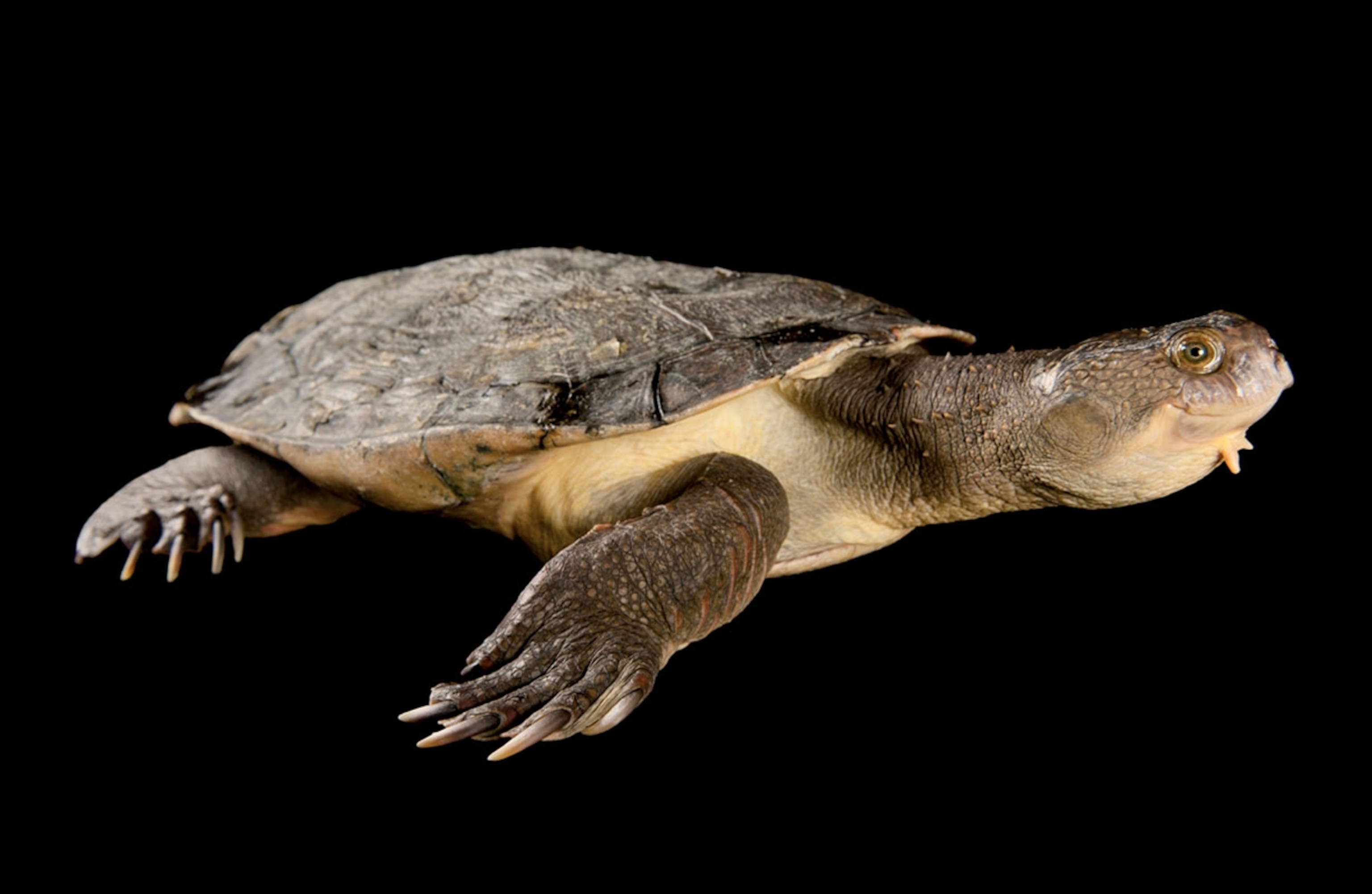
This endangered turtle sports a mohawk—made of algae
Australians call their native turtle a “bum breather” because its tail holds organs that are used to breathe in air, send out waste—and have sex.
Hatchlings known as “penny turtles” or “pet-shop turtles” were sold in Australian stores in the 1960s and ’70s. Aussie reptile expert John Cann couldn’t figure out the turtle’s species or origin for years—until he saw one in its only native habitat, the Mary River in Queensland. That was just the first of many intriguing discoveries about Elusor macrurus—the Mary River turtle, listed as endangered by the IUCN and other conservation groups.
It’s one of Australia’s largest freshwater turtles, topping out at nearly 18 pounds in a 17-inch-long shell. It’s thought to have split from other species about 40 million years ago and is the only species in its genus. It may live to be 100 years old and not start reproducing until it’s 20. And when E. macrurus does breed, the male deploys one part of a multipurpose tail that he also uses to void waste—and to breathe. The tail’s gill-like structures allow the turtle to stay submerged for up to two and a half days without surfacing.
“The bum-breathing trait attracts a lot of attention,” says conservationist Marilyn Connell. As a leader of the Mary River turtle conservation project in Queensland’s Tiaro district, Connell is focused on preserving the species, whose population is now mostly older because predators wipe out eggs and hatchlings. In breeding season (October through December), project members prowl the riverbanks to protect nests, Connell says, so the turtle “can continue doing what it’s evolved to do over eons.”

As for the coiffure: It grows on him
Chris Van Wyk opposed the Queensland government’s 2006 proposal to build a dam on the Mary River, lest it damage wildlife habitat and pristine snorkeling spots. To raise awareness, the amateur photographer made pictures of at-risk animals—including the Mary River turtle, whose shock of hairlike algae is encouraged by the reptile’s long stretches underwater. The “punk turtle” photos went viral and pop up on the internet to this day. They also fueled the fight against the dam plan, which the government dropped in 2009. It’s proof, says Van Wyk, that “photography can change the world.”




